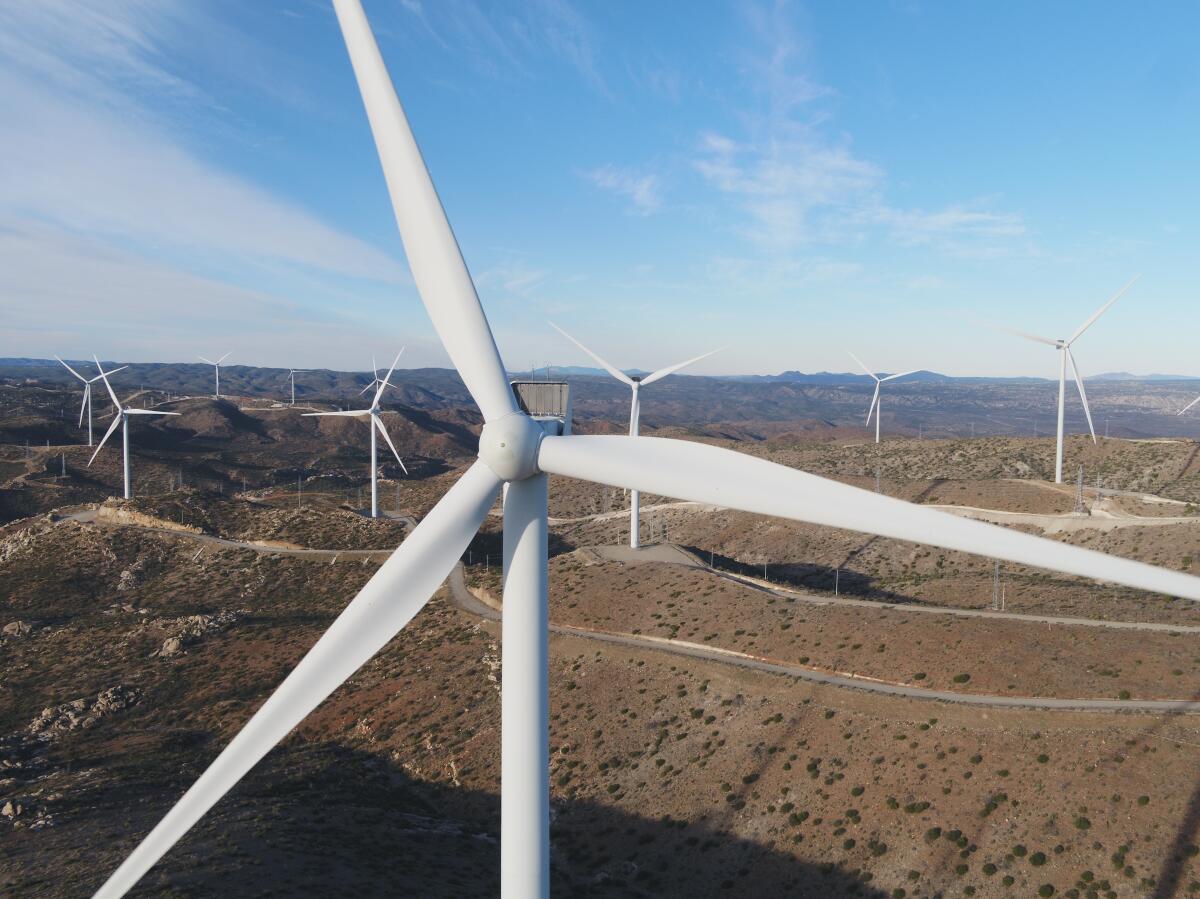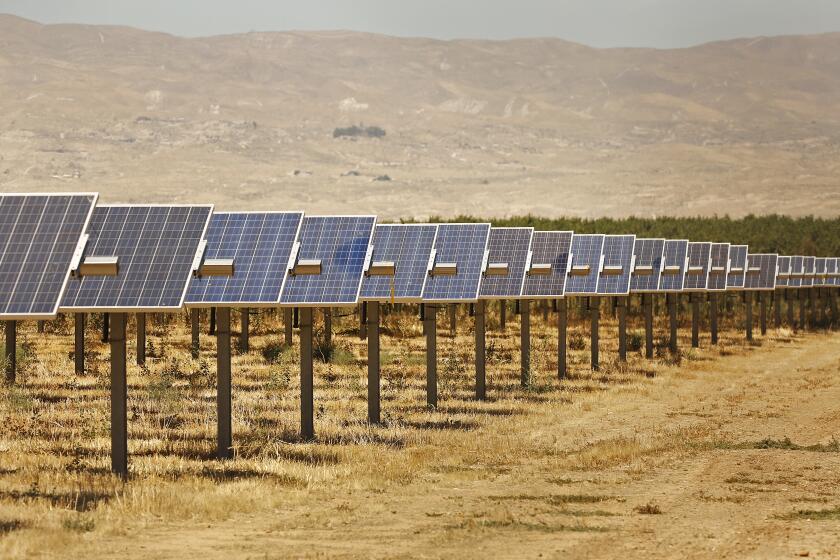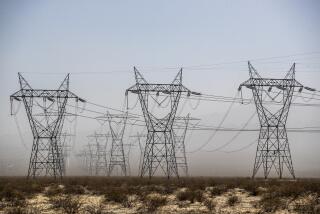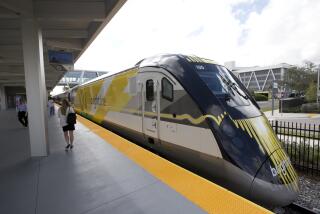Sempra signs a 20-year deal with Silicon Valley utility for proposed wind farm in Mexico

- Share via
Sempra, the Fortune 500 energy giant based in San Diego, plans to build another large wind farm in Baja California and has already signed a long-term deal with a municipal utility serving the Silicon Valley to take the energy generated by the project’s 60 turbines.
Pending necessary permits from the U.S. and Mexican governments and finalized commercial contracts, the proposed Cimarrón wind project would generate 300 megawatts of electricity — the equivalent of the annual energy consumption of more than 84,000 homes — and reduce almost 210,000 metric tons of CO2 of greenhouse gas emissions each year.
Officials with Sempra Infrastructure, a subsidiary of Sempra, announced a 20-year power purchase agreement Thursday with Silicon Valley Power, a municipal utility based in Santa Clara.
“Silicon Valley Power continues to make strategic long-term investments in clean energy and add diverse energy resources to our power portfolio,” Manuel Pineda, chief electric utility officer of Silicon Valley Power, said in a statement.
Ground has not yet been broken on the project but should it move forward, Sempra Infrastructure anticipates Cimarrón to start commercial operations by the end of 2024. Construction is estimated to create about 2,000 direct and indirect jobs in Mexico.
Wind turbines, solar panels and power lines are needed to confront climate change. But they’re also reshaping the West — and not always for the better.
Financial details of the deal were not disclosed, with Sempra officials saying the figures were proprietary.
The electricity generated by Cimarrón’s turbines would flow from Tecate to the ECO Substation in San Diego’s East County and then into California’s electric grid.
That setup is similar to an already existing 260-megawatt wind farm called Energía Sierra Juárez that Sempra Infrastructure operates, which is about six miles from where the Cimarrón facility is planned. Some 47 turbines make up Phase 1 of the Energía Sierra Juárez project and Phase 2 is comprised of 26 turbines that power the turning blades at each tower.
Sempra Infrastructure also operates a third wind facility, called the Ventika wind farm in the state of Nueva Léon. With 84 turbines and an installed capacity of about 225 megawatts, Ventika is one of the largest wind generation facilities in Latin America.
The company also has plans to install a battery storage facility of up to 500 megawatts called Volta de Mexicali that would be constructed in Mexico and serve Imperial Valley via the interconnection at the East County substation.
There’s only so much land. Balancing clean energy and conservation will be crucial.
“We are focused on the safe and reliable integration of clean energy into North America’s power grid, utilizing our U.S.-Mexico cross-border infrastructure,” said Emily Shults, senior vice president for development of clean power at Sempra Infrastructure.
Sempra, the parent company of Southern California Gas and San Diego Gas & Electric, has long been involved in energy projects in Mexico.
Sempra Infrastructure operates the Energía Costa Azul facility in Ensenada that serves as an import destination for liquefied natural gas, or LNG. The company is constructing an export component to the site, to take advantage of the growing global market for LNG.
In addition, the company is working with the Mexican government to build another LNG export facility in the port city of Topolobampo on the Gulf of California.
Export terminals on or near the Pacific are considered valuable because ships carrying LNG cargoes to natural gas-hungry markets in Asia can skip paying the tolls at the Panama Canal that facilities on the Gulf Coast must pay and can reach their destinations in about half the time.
In the U.S., Sempra Infrastructure is the majority owner of the $10 billion Cameron LNG facility on the Louisiana Gulf Coast that opened in full commercial operations in August 2020, and has plans to build an even bigger LNG export project in Port Arthur, Texas.
Many environmental groups are opposed to LNG exports because natural gas is a fossil fuel and methane can leak from pipelines, well sites and other infrastructure.
More to Read
Inside the business of entertainment
The Wide Shot brings you news, analysis and insights on everything from streaming wars to production — and what it all means for the future.
You may occasionally receive promotional content from the Los Angeles Times.













